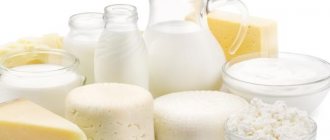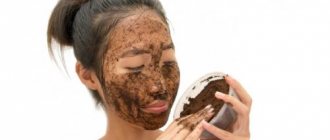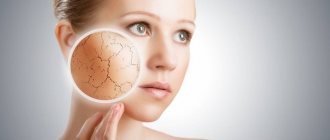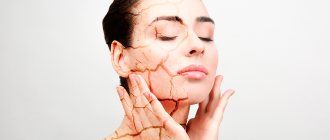Is your skin looking tired these days? Has it lost its natural radiance and radiance? Maybe the skin looks a little yellowish and dull? If yes, then chances are good that you have yellow skin.
Just don't panic. The causes of yellow skin are not always internal. Certain external factors are responsible for this condition. Luckily, you can easily control these factors and prevent painful skin discoloration. - How so? Read on to learn about yellowish skin, what causes it, and ways to reverse it.
Causes of yellow skin
Yellow skin color in an adult may indicate the presence of both serious pathologies and digestive problems. Bilirubin, which is a breakdown product of hemoglobin, is responsible for the yellow color of the epidermis. The latter, in turn, transports oxygen in the body.
The pigment bilirubin is formed in the liver as a result of the decomposition of red blood cells. In some cases, an increase in pigment content leads to blockage of blood vessels and bile ducts, liver pathologies, and the formation of gallstones. In addition to yellowing of the skin, increased bilirubin gives a yellow tint to the sclera of the eyes and the surface of the tongue.
Yellow facial skin is observed when the cardiovascular system and lipid metabolism are disrupted. Another cause of pathology is a sudden change in diet, problems with metabolism and high cholesterol in the blood. Yellowing of the skin can be a reaction of the body to vegetable salads, juices or fresh juices with a high content of carrots, pumpkin, orange or tangerine.
Excessive intake of various spices
Excessive intake of various spices, fatty and spicy foods can provoke stagnation of bile, which subsequently affects the condition of the skin. Unhealthy skin tone appears as a result of an unbalanced diet, after prolonged fasting, alcohol and drug abuse.
In addition to the above reasons, pathology can be caused by:
- serious physical activity;
- stressful situations, depression and emotional shock;
- prolonged insomnia;
- pathologies of the digestive tract;
- hormonal imbalances;
- the body's reaction to exposure to the sun.
Among the serious disorders are malfunctions of the endocrine system, as a result of which the thyroid gland suffers. The environmental situation in the place where a person lives also affects the appearance and condition of the skin. The presence of a large number of enterprises in the city and work in such places over time can lead to disorders of various organs of the human body.
Video about yellow skin
Komarovsky's school on gallbladder diseases:
A natural complexion indicates that our body is healthy. Since ancient times, doctors have believed that the way we look primarily depends on the state of our health.
Often some diseases are reflected in skin color. Therefore, if you notice any changes or deviations from the norm, you need to consult a doctor to determine the cause of what is happening.
Even if the skin of the face has become slightly yellowish, this may indicate a number of health problems, even serious ones, such as diseases of the cardiovascular system.
We will help you first understand what may be causing yellowing of the skin.
Types of diseases with yellow skin color
Yellow skin color in an adult may appear as a result of the following pathologies:
- Cholecystitis. This disease is characterized by acute inflammation of the gallbladder. As a result, stones are formed that block the gallbladder and the exit of bile.
- Intestinal worm infection. The appearance of roundworms in the human body is associated with poor hygiene and the consumption of unwashed vegetables. The worm often parasitizes the liver, which causes unhealthy skin color along with other problems.
- Hemostatic spherocytosis is a pathology that destroys and deforms red blood cells. As a result, a person has yellowish skin and sclera of the eyes, as well as an enlarged spleen.
- Gallstones. They are solid deposits that vary in size, shape and composition.
Gallstones - Sickle anemia is a hereditary pathology that leads to the formation of an abnormal form of hemoglobin protein. Due to excessive breakdown of hemoglobin, patients often experience jaundice.
- Mononucleosis is a disease caused by a virus. It often manifests itself in the form of fever, with plaque forming on the tonsils, enlarged lymph nodes, liver and spleen. Yellow skin is one of the manifestations of infection.
- Hepatitis C is an inflammation of the liver caused by a virus that enters the human body through the blood. Experts call the virus a “gentle killer,” since the disease may not manifest itself for a certain time, and the infected person lives quietly, unaware of the presence of pathology in the body.
- One of the main causes of yellow skin is liver disease. Among them are: cirrhosis, hepatitis, Gilbert's syndrome. They all have different reasons for their appearance and the nature of their course. However, what unites a group of diseases is the destruction of the main human organ.
How to improve your complexion
If the natural color of the epidermis changes, the appearance of yellowness of the skin, spots, or deterioration of the general physiological condition, you should contact a gastroenterologist, infectious disease specialist, hematologist, and undergo a series of laboratory examinations and tests. During the diagnostic process, infectious, viral, parasitic diseases, disturbances in the functioning of the endocrine, excretory, and cardiovascular systems can be identified.
To get rid of the unnatural color of the epidermis, you will have to understand why it arose and eliminate the cause. If no serious health problems are detected, it is worth radically reconsidering your lifestyle, giving up bad habits, and starting to monitor your diet. It is important to pay attention to physical activity, sports, be in the fresh air more often, and follow a daily routine.
The diet should be dominated by fresh vegetables, herbs, berries, fruits, whole grains, dairy products, vitamin and mineral complexes. Excessive pallor and yellow skin color will disappear if you systematically consume figs, dates, veal, foods rich in fiber, garlic, apples, and tomatoes. In case of severe intoxication, absorbents will help cleanse the body of harmful substances.
Cosmetic procedures, professional medical cosmetics, and special care can improve the color of the skin on the face and remove yellowness. Several times a week it is worth making nourishing masks based on fermented milk products, natural ingredients, and medicinal plants. Alternative medicine will help normalize the condition of the epidermis.
Yellow skin color is a common phenomenon that can result from many factors. Such pigmentation in an adult does not always have negative consequences, as it can appear due to the food consumed. However, yellowed skin can indicate diseases of the liver, blood and gall bladder, which entails serious consequences for the body.
For this reason, it is necessary to carefully monitor your health and promptly seek help from a doctor.
Stages and degrees of diseases with yellow skin color
Depending on the cause of the disruption of bilirubin, jaundice is divided into 4 types:
- hemolytic (suprahepatic);
- hepatic;
- mechanical;
- carotene
The simplest and most non-dangerous type is carotene jaundice. The reason for its appearance lies in the consumption of foods high in carotene. As a result, a person's feet and palms may turn yellowish. This condition is safe and the symptoms go away on their own after a few hours.
Symptoms of diseases with yellow skin color
Yellow skin color in an adult is characteristic of various diseases, the symptoms of each of them have their own distinctive features and characteristics:
Symptoms of cholecystitis:
- abdominal pain;
- nausea, vomiting;
- poor appetite;
- diarrhea, constipation;
- heaviness in the right side;
- bitterness in the mouth.
Cholecystitis
Symptoms of intestinal worm:
- abdominal pain;
- nausea, vomiting;
- bloody stools, diarrhea;
- in some cases allergic rash;
- fatigue;
- in advanced stages, roundworms become noticeable in vomit and stool.
Symptoms of hemostatic spherocytosis:
- constant feeling of fatigue;
- abdominal pain;
- fever
Symptoms of gallstone disease:
- loss of appetite;
- nausea;
- sudden weight loss;
- pain in the right side;
- bitterness in the mouth;
- belching.
Symptoms of sickle anemia:
- attacks of pain;
- leg ulcers;
- decreased visual acuity;
- swelling of fingers or toes;
- fatigue.
Sickle anemia
Symptoms of chronic hepatitis C:
- weakness;
- nausea;
- muscle and joint pain;
- poor appetite;
- discomfort in the upper abdomen.
Symptoms of mononucleosis:
- fatigue;
- headache;
- poor appetite;
- abdominal pain;
- increased body temperature;
- a sore throat.
Diagnosis of diseases with yellow skin color
In order to establish the cause of the appearance of yellow skin in an adult, a specialist must conduct a comprehensive examination, which includes:
- taking an anamnesis, during which the doctor studies the patient’s symptoms and complaints;
- a physical diagnosis is carried out, which includes palpation of internal organs and external examination of the patient;
- to study the condition of internal organs, ultrasound or computed tomography is prescribed;
- A biochemical blood test is carried out, as well as a clinical analysis of blood and urine.
CT scan
You can undergo the examination at a clinic at your place of residence.
Diagnostic prices are presented in the table:
| Procedure | price, rub. |
| Bilirubin test | 160-250 |
| General blood analysis | 200-270 |
| Alkaline Phosphotophase Assay | 130-190 |
| ALT analysis | 190-250 |
| Ultrasound of internal organs | 2150-2650 |
| CT scan | 4000-6500 |
When to see a doctor
When yellowing of the skin appears, first of all you need to listen to the general condition of the body. If no symptoms are observed, perhaps the cause lies in poor diet and digestive problems. If skin pigmentation does not subside within several days, a person should consult a therapist.
The doctor will conduct an initial diagnosis, during which a further treatment plan will be prescribed.
When to see a doctor
Depending on the disease, the patient will need the help of doctors of a more narrow specialization:
- gastroenterologist;
- infectious disease specialist;
- hematologist;
- endocrinologist.
Causes
- Doctors consider the most common cause of yellowness to be an excess of bilirubin in the body.
- Another reason may be problems with the thyroid gland.
Most often, they are associated with a lack of substances that break down beta-carotene.
- Yellowish skin can also indicate cancer.
- If the membranes of the eyes and eyelids are “colored” yellow, then the reason may be hidden in excess cholesterol.
In general, yellow skin can be caused by a number of reasons:
- diseases of the digestive system,
- oncological diseases,
- diseases of the genitourinary system,
- problems with the endocrine system.
In addition to the above reasons, yellow skin color can appear due to bad habits or poor diet.
Prevention of diseases with yellow skin color
To prevent diseases, you must adhere to the following rules:
- lead a healthy lifestyle;
- to refuse from bad habits;
- eat healthy food and watch your diet;
- exercise;
- go for walks;
- maintain a daily routine;
- An important point is facial skin care, which consists of using nourishing masks and other cosmetic procedures;
- When the first symptoms appear, you should consult a doctor, as timely treatment helps to quickly overcome the disease and prevent complications.
Treatment
The ideal complexion is pinkish with blush. It indicates that the human body is healthy. If there are no medical prerequisites and good tests, in order to return your natural complexion, you need to try to do it yourself.
- Get rid of bad habits.
- Set up a daily routine.
- Sleep at least 8 hours a day.
- Eat healthy.
- Try to eat carrots, oranges, and pumpkins as little as possible.
- If possible, avoid adding seasonings to your food.
- Wine, cabbage and onions will help restore freshness to your face.
- Take care of your skin using folk remedies.
If nothing changes for a long time, you should look for the problem internally with the help of a doctor. Go for an appointment and examination. The disease can be quite serious.
Methods of treating diseases with yellow skin color
Before prescribing treatment, it is necessary to determine the cause of the pathology. To do this, consultations are carried out with specialists who, during the course of research, prescribe a rehabilitation plan. Often, in addition to taking medications, a diet is necessary that is aimed at normalizing the functioning of internal organs.
Medications
For pathologies caused by viruses, the following drugs are used:
- Ribavirin. Available in the form of tablets and capsules. Do not use during lactation, pregnancy, during recovery after myocardial infarction, or for problems with the thyroid gland. Side effects include: headache, nervousness, high blood pressure. Take 1 tablet 2 times a day. The duration of treatment is at least 4 months. Price from 94 rub.
- Sofosbuvir. It is used to treat hepatitis C in combination with other drugs. Available in tablet form. Take 1 tablet per day with meals. Duration of treatment is 3 months. The drug is often easily tolerated and has no side effects. It is prohibited for use by pregnant women, as well as during lactation and in the presence of individual intolerance to the components. Price from 4000 rub.
Ribavirin
Possible complications
Incorrect and untimely treatment of pathologies that cause yellow pigmentation of the skin can lead to:
- to rupture of the gallbladder, which is fatal to humans;
- if the body is infected with parasitic worms, intestinal obstruction, acute appendicitis, liver abscess or tissue sepsis may occur;
- gallstones can turn into acute cholecystitis, pancreatitis, and also form holes in the organ, which is dangerous for human life;
- improper treatment of anemia leads to liver failure, blindness, and capillary blockage;
- as a result of the development of mononucleosis, the following complications are identified: splenic rupture, bacterial infections, hepatitis, meningitis;
- cirrhosis, hepatosis and liver cancer.
Gallbladder rupture
Yellow skin color can be the cause of many diseases, some of which are deadly. In an adult, pigmentation spreads to the skin, sclera of the eyes and tongue. Since there is a possibility of a pathological process developing in the body, when the first symptoms appear, you should seek help from a doctor.
Folk remedies
If medical diagnoses are not confirmed, then you can turn to natural recipes. Special masks that you can easily prepare at home will help you get rid of yellow skin. Some will whiten your face, while others will give your skin a darker, tanned tone. Choose the one that suits you best.
- To lighten your skin, take a regular cucumber. Cut it into thin slices and place on the skin. It is useful because under the skin it contains B vitamins, various minerals, and ascorbic acid.
- To lighten your face, you can also take kefir, sour cream or cottage cheese. One of these products is simply applied to the skin and left on for about 20 minutes before rinsing off.
- To give your face a tan effect, take a carrot or ground coffee. Apply the mask to your face, keep it on for up to 20 minutes and then rinse off.
- A fresh glow will appear on your face and your skin will become more matte after using a mask of onion juice and honey (mixed in a 1:1 ratio).
- In order to gradually remove the yellow tint on your face, you can try a mask of chamomile oil and fresh cabbage juice.











